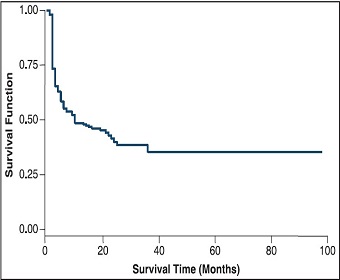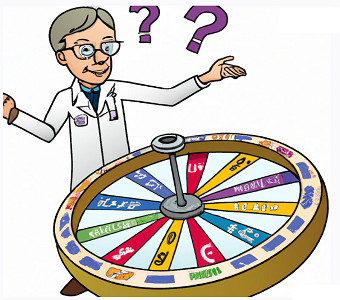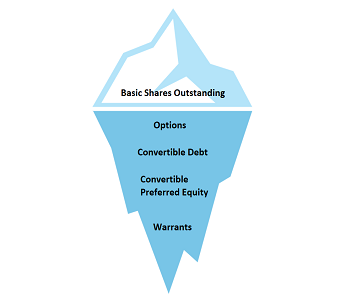In the last Biotech Basics notes, we covered how to spot incoming financings (read here) and how dilutive instruments can manipulate valuations (read here).
This article will cover the most important catalysts for biotech companies: data readouts. These events move the share price by attracting (or deterring) investor attention and funding, provide evidence for regulatory approval, and impact the industry as a whole. Positive results can have a significant impact, while negative results can be a setback. We’ll cover what makes a data readout positive and what to watch for.
4 Things to Determine Successful Study
1. Was the primary endpoint met?
The primary endpoints are the main outcomes that the study aims to measure. For example, in a study on a new cancer drug, the primary endpoint might be the number of patients who experience a reduction in tumor size. Patients with nonalcoholic steatohepatitis (NASH), for example, have a damaged and inflamed liver with scar tissue. In this case, the endpoint might be the reduction in scar tissue (called fibrosis) and decrease in liver inflammation.
Important: If the primary endpoint failed, the trial failed.
2. Were secondary endpoints met?
These are additional outcomes that the study measures, but are not the primary focus. Secondary endpoints can provide additional information about the safety and effectiveness of the treatment. For example, in a cancer drug study, secondary endpoints might include overall survival or time to disease progression. In NASH patients, secondary endpoints might include liver fat content and inflammation biomarkers.
Important: If the primary endpoint failed, the trial failed, even if secondary endpoints are met. They are secondary endpoints for a reason.
3. Was treatment safe & tolerable?
Adverse events are any negative side effects that occur during the study. These can range from mild side effects, such as nausea, to more severe events, such as hospitalization or death.
Below is a ranking of adverse events:
- Grade 1: Mild symptoms that require no intervention
- Grade 2: Moderate symptoms with minimal, local, or noninvasive intervention
- Grade 3: Severe or medically significant symptoms but not immediately life-threatening. Hospitalization or prolongation of hospitalization occurred.
- Grade 4: Life-threatening symptoms that required urgent intervention
- Grade 5: Death related to adverse event
Note: Generally, a Grade 4 or Grade 5 event is a cause of concern, depending on the clinical indication. A late-stage cancer patient will be more prone to serious adverse events, so the benchmark is different than a chronic cough patient.
4. Were endpoint results statistically significant?
This means that the results are unlikely to have occurred by chance. For results to be statistically significant, the p value must be less than 0.05 (p<0.05), which means that there is a less than 5% chance that the difference between the treatment and control groups is due to chance.
Keep in mind that statistical significance does not equal clinical significance. Clinical significance compares the results to existing treatments already in market and currently in development. To understand clinical significance, it’s important to get the perspective of doctors and patients, or compare to competing drugs.
Example to Interpret Study Data
In late March, 89bio (ETNB) announced results from Phase 2b clinical trial in NASH. The full press release can be found here.
To determine whether the data readout was a success, let’s take a look at the 4 points mentioned above:
1. Was the primary endpoint met? - CHECK
This study had 2 primary outcomes:
- percentage of patients with ≥1 stage fibrosis improvement with no worsening of NASH and
- percentage of patients with resolution of NASH without worsening of fibrosis.
On both primary endpoints, ETNB’s pegozafermin outperformed placebo, and did so with statistical significance (p<0.05) at the higher dose cohorts.

The lower dose cohort, the 15mg arm, did not hit statistical significance (p=0.1) for endpoint #1. Looking closer, this was the lowest dose, with a sample size (n=14). The two higher dose cohorts, both of which met the primary endpoints with high statistical significance, also had larger sample sizes. The data from these two higher dose cohorts is a better representation than the 15mg cohort.
2. Were secondary endpoints met? -CHECK
Secondary measures included change from baseline in liver fat, liver enzymes, noninvasive markers of liver fibrosis, glycemic control, lipoproteins, and body weight as well as safety and tolerability measures.
The secondary measures were statistically significant (at least p<0.05) against placebo.

3. Was treatment safe & tolerable? – CHECK, but not perfect
ETNB reported that the most frequently reported treatment-related adverse events (AEs) were Grade 1 or 2 gastrointestinal events (diarrhea, nausea and increased appetite) most of which were mild to moderate in nature.
5 patients treated with pegozafermin were discontinued due to treatment-related AEs all of which were Grade 2 compared with none for placebo. A single drug-related serious adverse event of uncomplicated pancreatitis was experienced by a patient in the 44mg Q2W dose group after a single dose of pegozafermin which resolved in a short time period.
The majority of adverse events were Grade 1 or 2, which are mild or moderate in nature and not a safety concern. The one case of pancreatitis, which was related to the drug and serious in nature, is a cause of concern and part of the reason why this section is not a full “CHECK”.
4. Were endpoint results statistically significant?
As mentioned above, the primary and secondary endpoints were statistically significant. The data was also clinically relevant, as primary endpoints were in line with other NASH drugs in the pipeline.
The effect size between ETNB drug arm and placebo were 20% for endpoint #1 and 24% for NASH resolution. These fell in line with other drugs’ effect size, as seen below.


Impact of Data
The market interpreted ETNB’s Phase2b data as a success. ETNB stock traded up 25% on the release and was able to close a $200M public offering after the data was announced.
Recap:
4 questions to ask when determining whether a data readout was positive:
- Was the primary endpoint met?
- Was the secondary endpoint met?
- Was treatment safe & tolerable?
- Were endpoint results statistically significant?
Access This Content Now
Sign Up Now!




